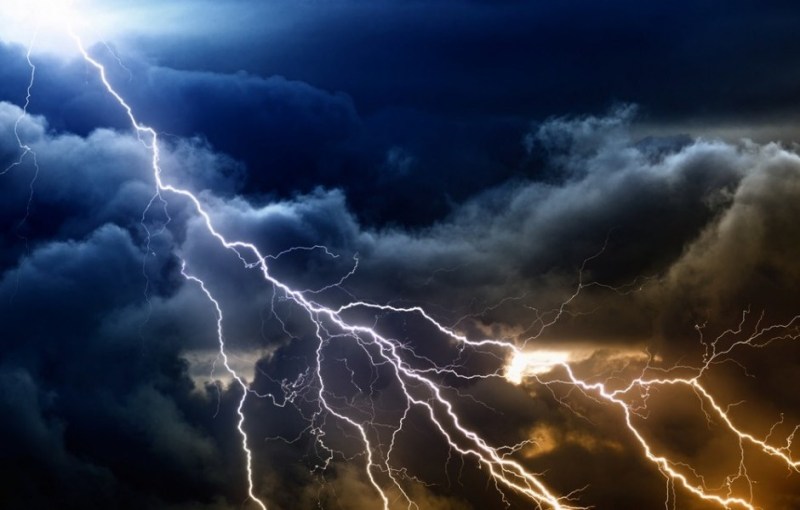
With warmer weather comes more frequent lightning storms — particularly in the American Southeast. Though it might seem funny and cool and epic to stand in a lightning storm and scream at the gods with your arms outstretched, we urge you to not do this. Instead, we ask you to observe the 15th Annual Lightning Safety Awareness Week by following these lightning safety tips, courtesy of the National Weather Service and the Lightning Protection Institute.
1. Get Indoors As Quickly As Possible
You’ve likely heard a wide range of suggestions for what to do during a lightning storm: Should you step under a tree? No. Should you stand in the middle of a field? No, that can’t be right. Lie down in the middle of a field? Nope. In fact, nowhere outside is safe during a lightning storm. If you can hear thunder, there’s a chance you could get struck. Really. The National Weather Service has a handy rhyme to keep in mind: “When thunder roars, go indoors.”
Once you’re inside, stay away from doors, windows, indoor plumbing, and plugged-in electrical appliances (including phones). In fact, you might unplug your appliances to prevent them from suffering damage during an electrical surge. If you have a basement or lower floor of your home, go down there. Wait 30 minutes after you hear the last thunderclap, then resume your normal routine.
To pass the time, you and a buddy could turn off all the lights and take turns delivering dramatic, ominous lines in time with the cracks of lightning. Here’s an example: “I’m just a figment of your imagination, Carl.” *thunder crash*
Related: Trekking: Stay Connected With Our Favorite Outdoor Apps
2. If You Can’t Get Indoors, Get in Your Car
But aren’t cars made of metal? Doesn’t metal conduct electricity? Yes they are, and yes it does — that’s exactly why you want to be in there. Contrary to popular belief, it’s not the rubber tires that protect you, but rather the metal exterior, which conducts the electrical current away from you and toward the ground. In this sense, a metal vehicle acts as a sort of “Faraday Cage.” Again, we recommend waiting in your car for 30 minutes after the lightning storm has passed.
3. When All Else Fails, Crouch Down
You should NOT seek shelter under a lone tree. Trees, being tall, actually attract lightning, which can either cut through or “bounce” off the tree and end up striking you anyway. You should also refrain from lying down — if the lighting strikes the ground near you, the electrical current may radiate through the ground and into your body. Instead, crouch down with your feet together and your head as close to the ground as possible without actually touching. Short of finding shelter indoors, this is the best way to minimize your risk of shock from above or below.
Lightning strikes the Earth an average of 100 times per second. A single strike can pack up to 100 million volts and heat up to 50,000 degrees Fahrenheit (5 times hotter than the surface of the sun). So yeah, it’s best to just stay out of the way. For more lightning safety tips and other lightning-related information, head over to this page from the National Weather Service.


